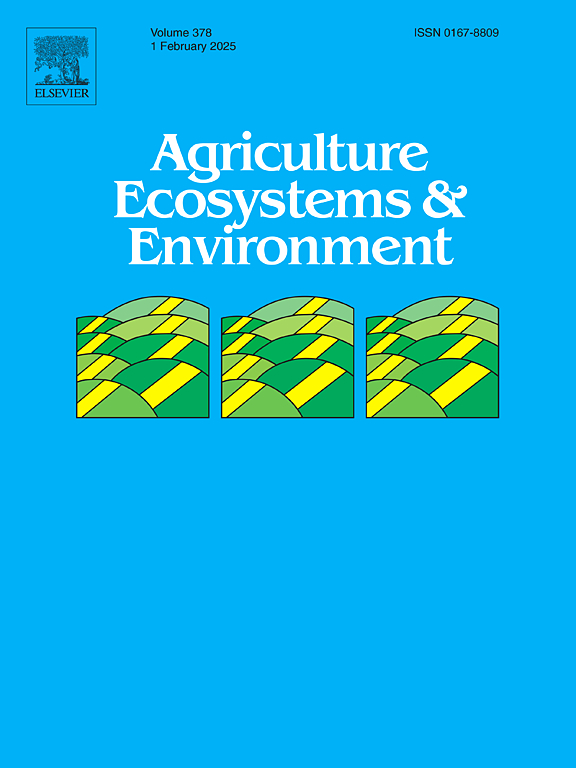Intensive rotational grazing has positive effects on productivity of rangeland
IF 6
1区 农林科学
Q1 AGRICULTURE, MULTIDISCIPLINARY
引用次数: 0
Abstract
Intensive rotational grazing is a recently proposed rangeland management strategy that has been praised by the public and media but has not been fully proven or widely accepted by rangeland ecologists. In this study, a three-year experiment was performed to evaluate the effects of intensive rotational grazing on the rangeland ecosystem in a typical steppe in Inner Mongolia, China. The experiment involved three treatments of rotational management with the same level of grazing intensity (1 sheep unit per ha in the first year and 1.3 sheep unit per ha for the next two years), including intensive rotational grazing (livestock rotated every 3–5 days), traditional rotational grazing (livestock rotated every 15 days), and continuous grazing (without livestock rotation). In addition, this experiment set up “no grazing treatment” as the reference and represents the widely used policy of “grazing forbidden”. Compared with previous studies, this study first implemented rotational grazing at a low level of grazing intensity to obey the rangeland policy of Chinese governments, which aimed to balance the forage demand of livestock and the ecosystem conservation. The results revealed that the aboveground biomass and root biomass (0–10 cm deep) were significantly higher in the intensive rotational grazing treatment than in the other two grazing treatments. Moreover, the biomass of the dominant species (Leymus chinensis) and its proportion in the community were also higher in the intensive grazing treatment. Intensive rotational grazing could also promote the weight gain of grazing sheep. However, intensive rotational grazing did not improve the carbon sequestration of rangeland. These results indicated that intensive rotational grazing had considerable advantages in realizing the sustainable management of grazing grasslands when grazing intensity was at a relatively low level, which aims to balance plant growth and livestock production of grasslands. Furthermore, our results suggest that intensive rotational grazing is beneficial for promoting the progressive succession of degraded grasslands and providing economic revenue for local herders, thus worth studying in more regions and rangeland scenarios.
求助全文
约1分钟内获得全文
求助全文
来源期刊

Agriculture, Ecosystems & Environment
环境科学-环境科学
CiteScore
11.70
自引率
9.10%
发文量
392
审稿时长
26 days
期刊介绍:
Agriculture, Ecosystems and Environment publishes scientific articles dealing with the interface between agroecosystems and the natural environment, specifically how agriculture influences the environment and how changes in that environment impact agroecosystems. Preference is given to papers from experimental and observational research at the field, system or landscape level, from studies that enhance our understanding of processes using data-based biophysical modelling, and papers that bridge scientific disciplines and integrate knowledge. All papers should be placed in an international or wide comparative context.
 求助内容:
求助内容: 应助结果提醒方式:
应助结果提醒方式:


